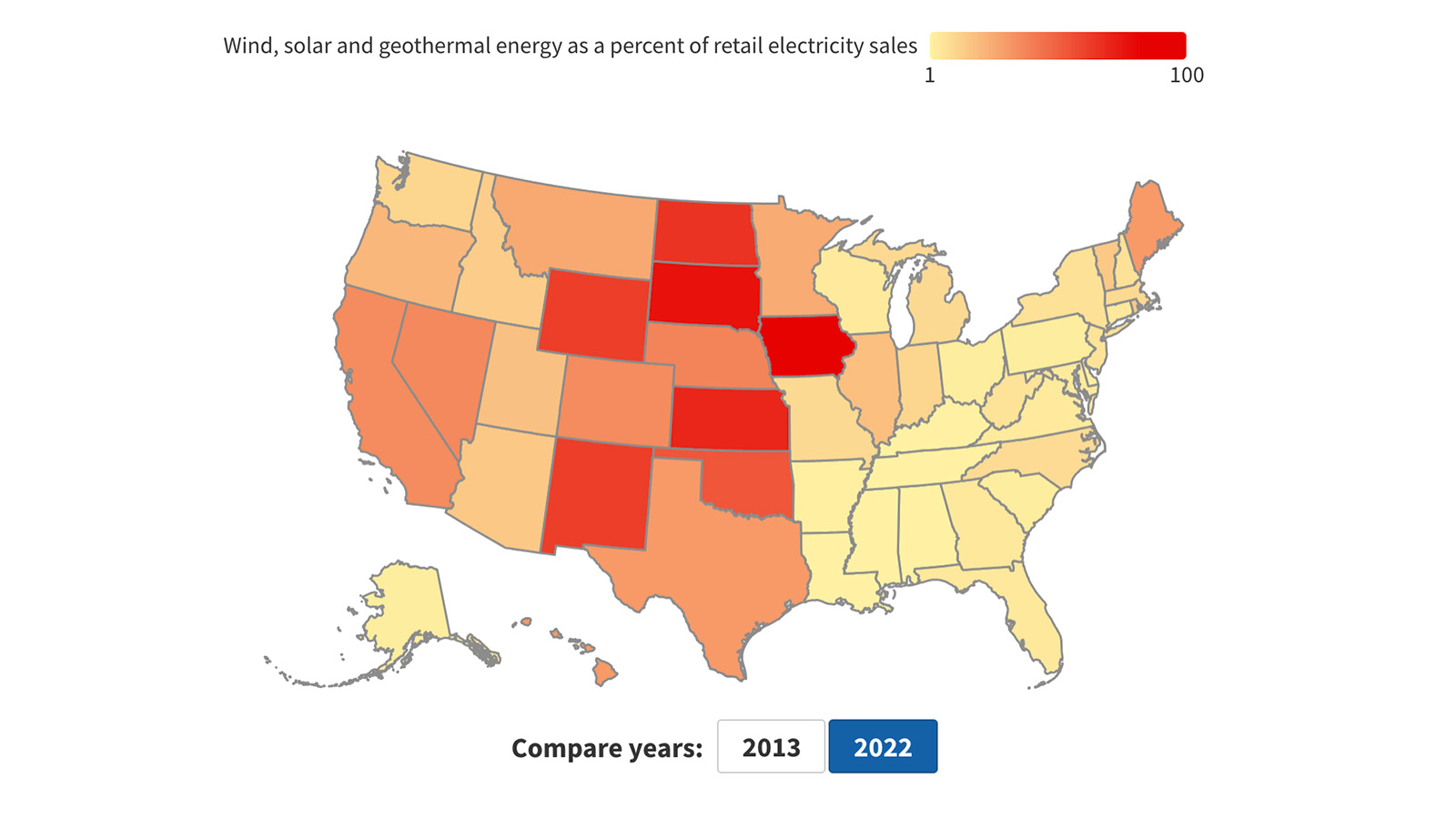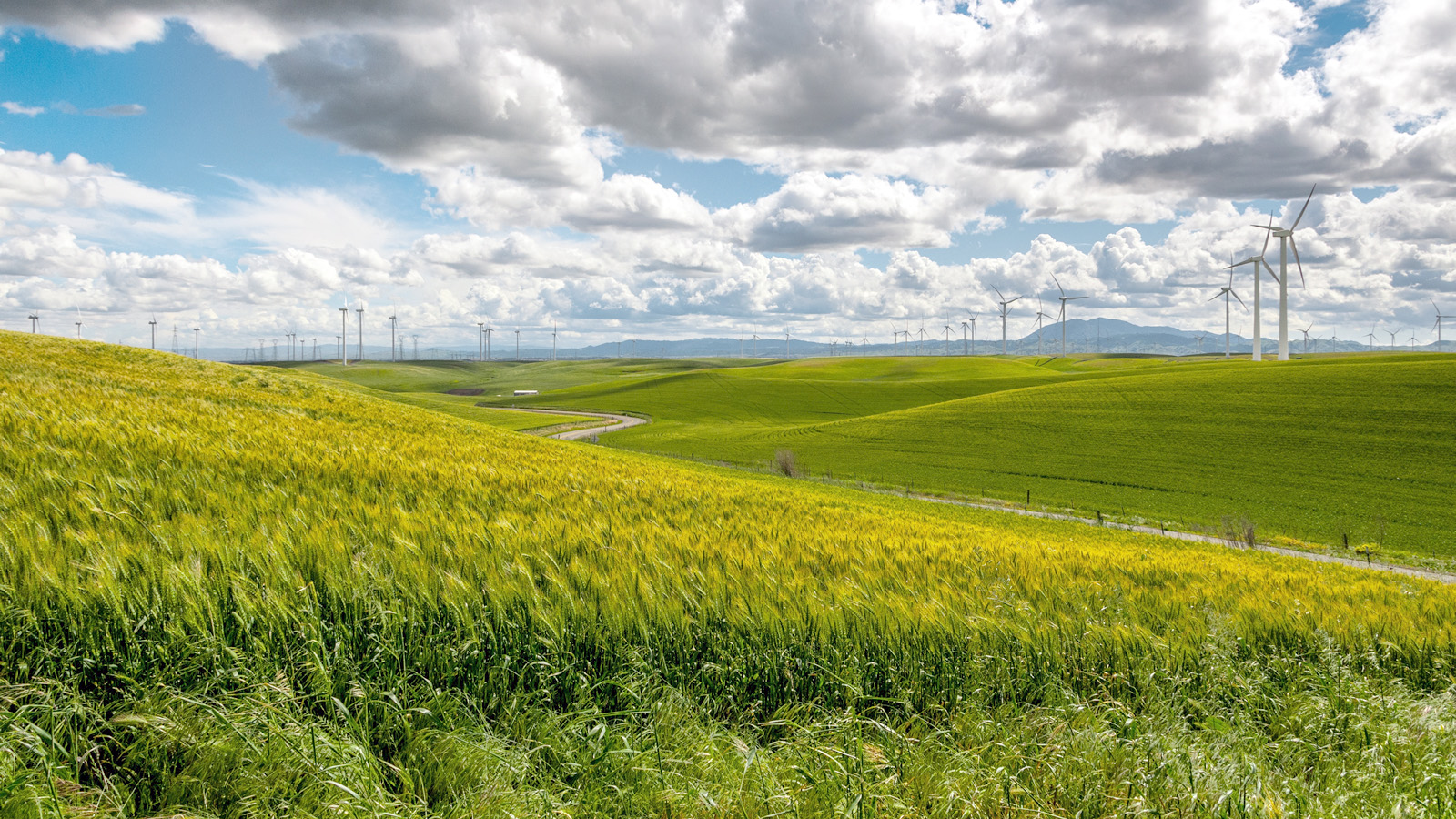
The Power of Offshore Wind
A Source of Clean, Reliable, Affordable Electricity for Maryland's Future
The wind blowing over the ocean along Maryland's coast is a vast, untapped energy resource. Capturing just a fraction of this resource can help to modernize Maryland's electricity system for the 21st century and give the state greater control over its energy destiny.
Downloads
Environment Maryland Research and Policy Center
Executive Summary
The wind blowing over the ocean along Maryland’s coast is a vast, untapped energy resource. Capturing just a fraction of this resource can help to modernize Maryland’s electricity system for the 21st century and give the state greater control over its energy destiny.
Wind turbines deployed offshore could deliver large amounts of pollution-free electricity at a stable price – a bargain-rate insurance policy against unpredictable spikes in the cost of electricity and against the serious prospect of global warming. Offshore wind, as a local resource, can also reduce the need for Maryland to develop new power transmission lines to import electricity from coal-fired power plants in Pennsylvania or West Virginia.
Accordingly, Maryland’s Public Service Commission should take action to encourage development of the state’s offshore wind energy resources, setting a goal of commercial operation of the first major offshore wind farm by 2014.
Maryland is facing a crisis in its electricity system.
Since 2002, average Maryland electricity prices have climbed by more than 75 percent, even after adjusting for inflation.
Maryland’s dependence on fossil fuels and other states for its electricity supply leaves it vulnerable to further supply disruptions and price spikes. The Maryland Public Service Commission has warned of rolling blackouts by 2011 without action to curb power demand and/or increase supply.
New power lines are under consideration to increase the stability of Maryland’s electricity supply. However, these lines could increase the state’s dependence on polluting resources, export more of Maryland’s energy dollars out of state, and face high political hurdles before construction could go forward.
At the same time, Maryland’s electricity system is dominated by outdated and polluting technologies. Nearly 60 percent of the state’s electricity generation comes from coal-fired power plants. In addition, the state imports nearly a third of its electricity supply from coal-fired power plants in West Virginia and Pennsylvania.
Consumption of electricity from coal-fired power plants is Maryland’s leading source of the pollution that drives global warming. Without significant action, global warming will cause dramatic flooding of coastal areas as sea levels rise, yield stronger and more damaging storms, and threaten public health with intensified heat waves and smog.
Facing a crisis in its electricity system, Delaware chose offshore wind power to regain control over its energy future.
As rate caps mandated under electricity market restructuring came off in 2006, customers of Delmarva Power faced a 59 percent increase in the cost of power. The state legislature directed the Delaware Public Service Commission to search for local solutions that would improve price stability.
In May 2007, after receiving citizen comments in favor of offshore wind power by a 10-to-1 margin, the Public Service Commission approved the construction of the Bluewater Wind Farm and instructed Delmarva Power to negotiate a contract to purchase the power.
Bluewater entrepreneurs had recognized that the winds off the coast of Delaware were well-suited for power generation, blowing steadily during the day, when demand for electricity is often high. They also were able to offer a promise of stably-priced electricity for 25 years – something that no traditional power plant running on fossil fuels could match.
Commission staff found that the new wind farm could provide electricity to customers of Delmarva Power for an average of less than $1 per month more than under a reference case scenario. In the event that
fuel costs or the cost of emitting global warming pollution increase – which the commission found likely – offshore wind could provide net savings.
Offshore wind stands out as one of Maryland’s best local clean energy solutions.
Maryland can also turn to offshore wind power as one piece of a 21st century electricity system. With today’s technology, wind turbines placed in shallow waters along the Mid-Atlantic Bight from Massachusetts to North Carolina (excluding areas inappropriate for development, such as bird flyways and shipping lanes) could supply one third of the region’s annual electricity needs. With tomorrow’s technology, resources in deeper waters could meet the region’s entire energy needs, and more.
Offshore wind can help stabilize electricity prices, reduce the need for politically unpopular transmission lines, and help fight global warming.
Wind energy offers the advantage of price stability. Because most of the cost is for building and installing the wind turbine – and the “fuel” is free – the price of wind power does not fluctuate over time. For example, under its 2008 contract with Bluewater Wind, Delmarva Power will purchase offshore wind power for 11.7 cents per kWh, with future costs escalating at less than typical rates of inflation. The Delaware Public Service Commission determined that the small price premium this potentially represented was a bargain-rate insurance policy compared to its recent experience with unpredictably skyrocketing electricity rates.
Offshore wind can also be built close enough to power-hungry cities to reduce the need for long, expensive, and politically unpopular transmission lines. By connecting to the power grid relatively near to where the electricity will be used, an offshore wind farm would provide a local supply of electricity, improving the reliability of the electricity system. Coupled with substantial efforts to reduce peak demand through energy efficiency and solar energy systems, an offshore wind farm would likely help the state maintain a reliable electricity system through 2025.
Offshore wind can reduce Maryland’s contribution to global warming. One offshore wind farm with 600 megawatts (MW) of generating capacity could prevent more than 2 million metric tons of global warming pollution per year. That is equivalent to 4 percent of Maryland’s global warming pollution from electricity consumption, or the equivalent of eliminating pollution from nearly 1 in 10 vehicles on Maryland roads.
States across the Mid-Atlantic and the Northeast are moving to develop local offshore wind energy resources to increase energy security and reduce global warming pollution.
In October 2008, New Jersey Governor Jon Corzine issued an energy master plan that calls for the construction of 3,000 MW of offshore wind energy facilities by 2020. The state has selected Garden State Offshore Energy to construct the first wind farm 16 to 20 miles off of the Jersey Shore. The facility is expected to be operational by 2012.
Encouraged by New York Governor David Paterson, New York City Mayor Michael Bloomberg, and state policy supporting renewable energy, the Long Island Power Authority and Consolidated Edison are soliciting proposals for a 350 MW wind farm to be located 13 miles off the coast of the Borough of Queens. This wind farm will be one of the first capable of supplying large amounts of renewable power directly to the densely populated New York City area.
Rhode Island Governor Donald Carcieri is working with Deepwater Wind to build an offshore wind farm capable of meeting 15 percent of the state’s electricity needs by 2012, coupled with a turbine manufacturing facility expected to create 800 jobs.
Massachusetts Governor Deval Patrick has set a goal of building 2,000 MW of wind power by 2020. Most of the state’s wind energy potential is located offshore – symbolized by the Cape Wind project proposed for the shoals off of Cape Cod. Although wealthy property owners have effectively blocked Cape Wind to date, the U.S. Interior Department gave the project a favorable environmental review in January 2009, and Massachusetts authorities issued tentative siting approval. With final approval from the Obama administration, the facility could begin generating electricity by 2011 or 2012.
Maryland should facilitate the construction of a large wind farm along its shores by 2014.
The Maryland Public Service Commission should solicit proposals for a wind farm to be built off of Maryland’s coast.
The PSC should then direct utilities to negotiate long-term power supply contracts with the wind developer, following the lead of state officials in Delaware.
Topics
Find Out More


Recording of Road to 100% Renewable Energy with Dr. Mark Jacobson


